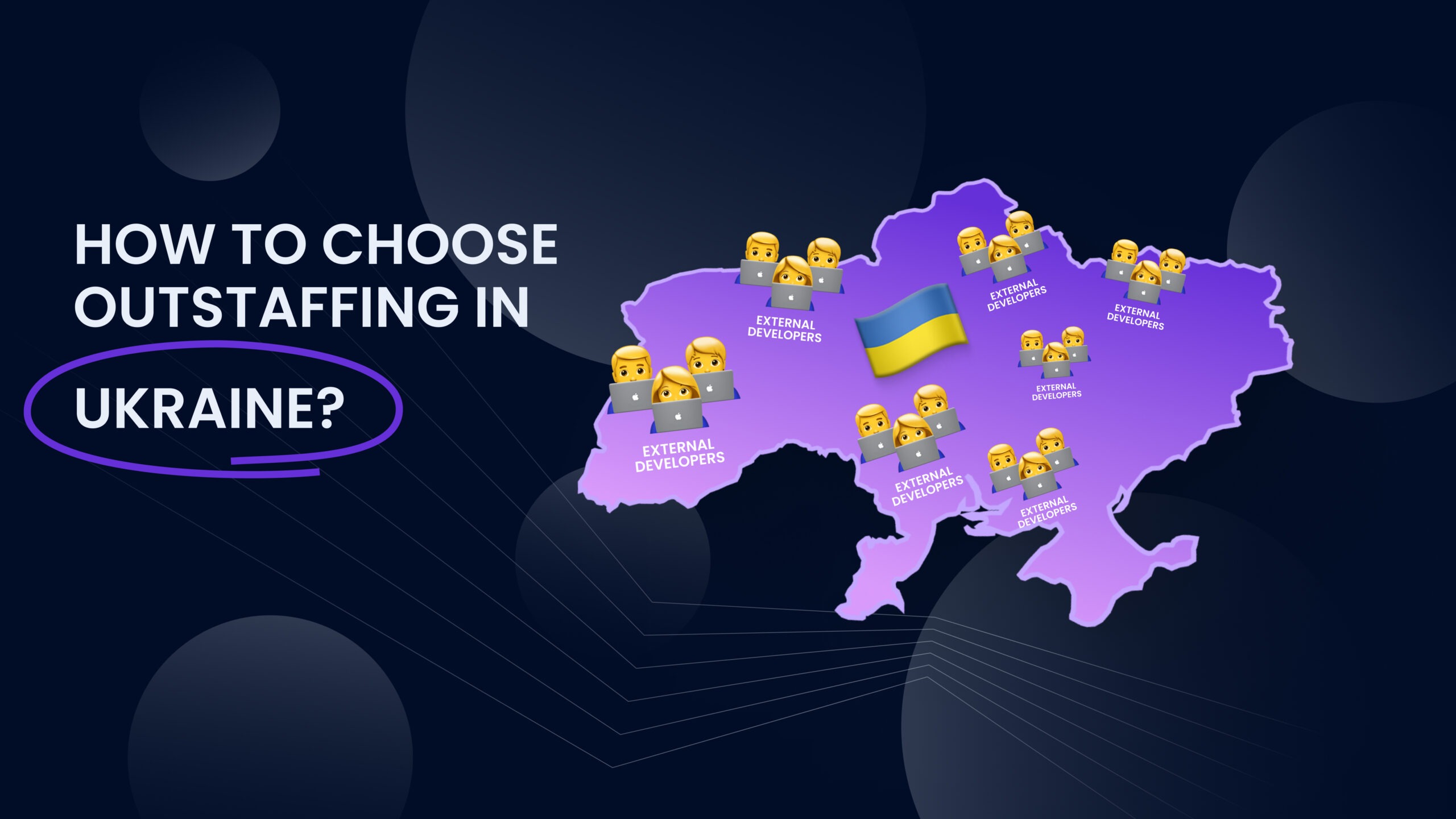
Outstaffing is a business practice of hiring specialists through an Employer of Record or a staff augmentation vendor in other regions of the world. Particular regions are especially popular among clients due to their low salaries and high quality of development. One of such regions is Ukraine.
So, if you’re looking for an IT outstaffing company, Ukraine and the Eastern European region might be one of the best choices. Its software developers and IT recruitment vendors offer cost-efficient and flexible solutions for startups and large enterprises. Keep on reading to learn the benefits of out staffing and the best regions to hire your dedicated teammates.
Content:
- Outsourcing vs outstaffing: What’s the difference?
- Software offshore staffing: What region to choose?
- Working in a war zone: Answering your questions
- How to choose the best IT outstaffing service in Ukraine?
Outsourcing vs outstaffing: What’s the difference?
Outsourcing and outstaffing are two popular business strategies in the IT industry, but they serve different purposes and offer distinct advantages.
Outsourcing is when you delegate entire projects or functions to an external company, often located in another country, which then handles everything—from management to execution. This approach is ideal when a business wants to focus on core operations (like e-commerce, manufacturing, healthcare, etc.) while entrusting a third-party provider with specific tasks like software development or customer support. Outsourcing typically involves handing over project control, including timelines and the team, to the external vendor.
Outstaffing, on the other hand, keeps the control in-house. In this model, a business hires remote developers or specialists from an outstaff vendor, but these professionals work under the direct supervision of the business’s internal management. This is a great solution when you need additional hands or specialized expertise without full-time employment. Outstaffing offers flexibility and scalability as you can easily add or reduce staff as needed while maintaining control over the project’s direction and outcomes.
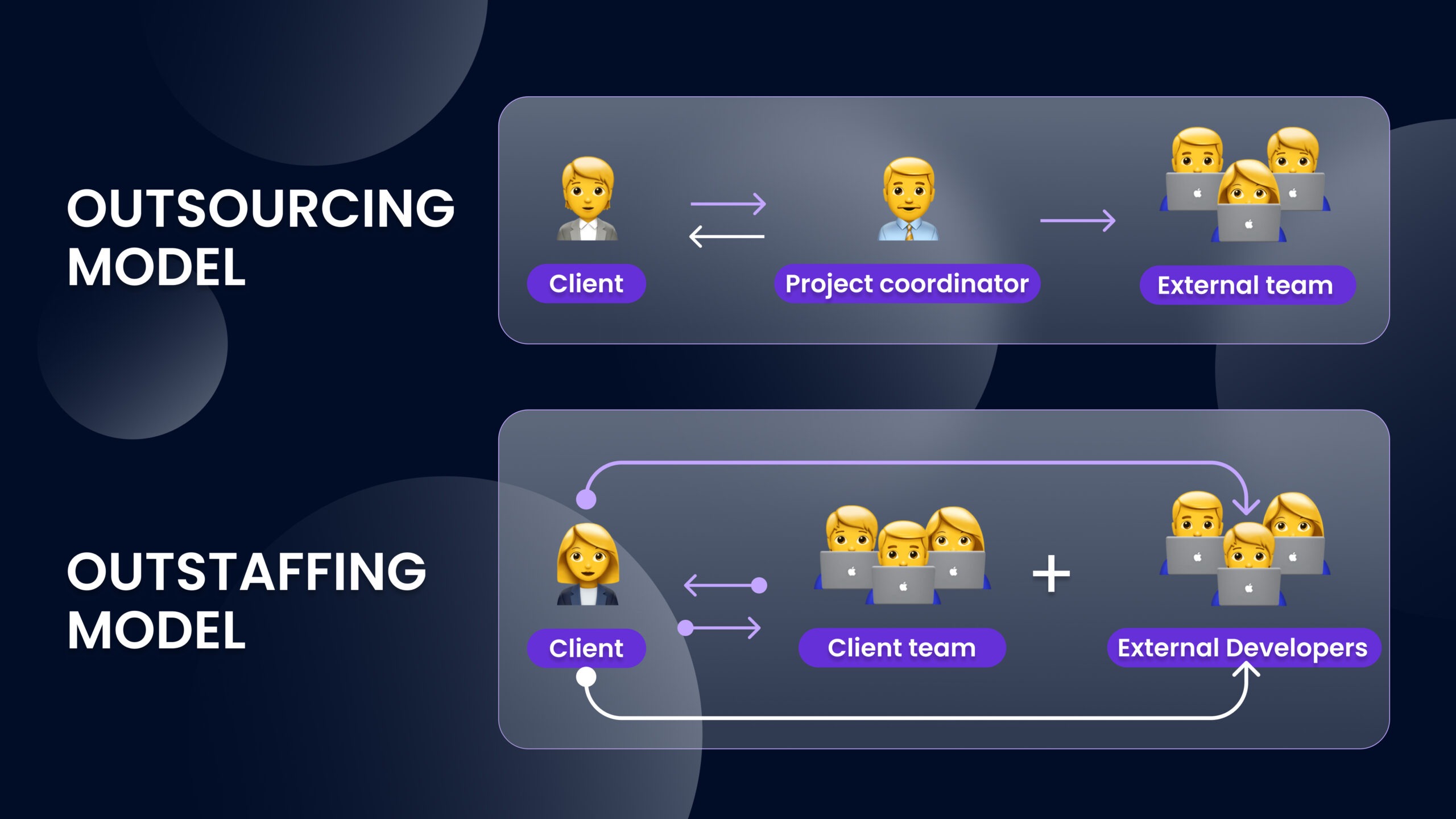
The key difference lies in control and integration. In outsourcing, you’re trusting an external partner to manage the process, while in outstaffing, you integrate external talent into your internal team, keeping direct management.
Software offshore staffing: What region to choose?
Choosing the right region for offshore software staffing highly depends on your preferences and experience. When completing this list of the best regions to hire tech talent, we considered average salaries, talent pool size, communication traditions, and cultural fit. Let’s explore four key regions:
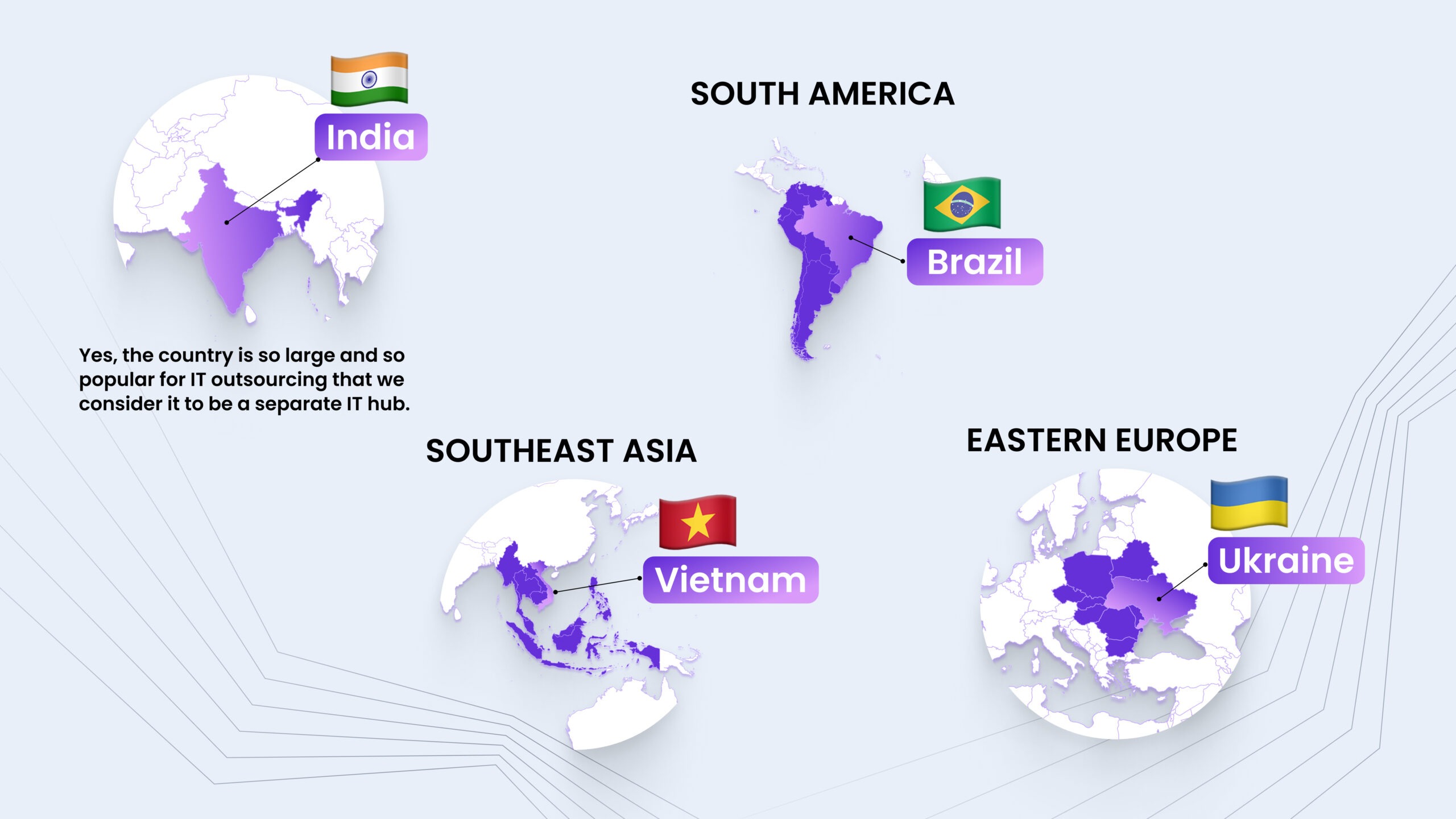
- Southeast Asia (Vietnam),
- Eastern Europe (Ukraine),
- South America (Brazil), and
- India (yes, the country is so large and so popular for IT outsourcing that we consider it to be a separate IT hub).
India

India has long been a global leader in outsourcing and IT outstaffing. Its advantages are well known: a vast pool of highly skilled developers, competitive pricing, and deep expertise in programming languages and frameworks.
Many Indian developers also have strong English, which helps bridge the gap in global collaborations. One challenge can be time zone differences, particularly for US and European companies, but many teams in India are adept at working flexible hours to accommodate international clients. The sheer scale of the industry means that finding talent is rarely an issue, though managing quality can sometimes require additional oversight.
An average annual salary for a middle-level software developer in India is $12,000 – $25,000; however, as IT services are one of the country’s key exports, Indian outstaffing and outsourcing vendors can charge twice or thrice the local salary.
Vietnam and Southeast Asia

Vietnam, alongside other Southeast Asian countries, is rapidly becoming a strong competitor in the offshore staffing market. Vietnam offers lower rates than India (the average annual salary for a middle developer is $10,000 – $20,000), but with a growing number of talented developers experienced in web development, mobile apps, and AI.
The region is also known for its tech-savvy youth population, who are eager to work on innovative projects. English proficiency is improving but still lags behind countries like India, which can pose challenges in communication. The time zone overlaps with Australia and parts of Europe, making Vietnam attractive for companies in those regions.
Ukraine and Eastern Europe

Ukraine and Eastern Europe stand out for their highly skilled workforce and strong technical education systems. Countries like Ukraine, Poland, and Romania are renowned for delivering high-quality, complex software solutions, particularly in specialized areas like AI, blockchain, and fintech.
Culturally, Eastern European developers tend to align well with Western business practices, and communication in English is generally strong. While rates are higher compared to India and Vietnam (a skilled software developer in a local Ukrainian market can expect to get $25,000 – $40,000 a year), they are still significantly lower than in Western Europe or the US.
Additionally, IT outstaffing Ukraine offers competitive pricing within Eastern Europe and is home to many top-tier developers. Its time zone alignment with Europe and even the US makes this region a convenient choice for long-term collaboration.
Brazil and South America

Brazil and other South American countries, such as Argentina and Colombia, offer several advantages, especially for North American companies. The primary benefit here is time zone alignment, which offers real-time collaboration during standard working hours. South America has a growing tech sector, with many talented developers skilled in modern programming languages and frameworks. While rates are generally higher than in Asia, the overall cost is still much lower than in the US. The average annual salary of a middle software developer in Brazil is $20,000 – $35,000. However, the talent pool, though expanding, is smaller than that of India or Eastern Europe, which might limit scalability for larger projects.
Our conclusions?
- India excels in scale and cost-efficiency, with a well-established presence in the global market.
- Vietnam and Southeast Asia are emerging as lower-cost alternatives with growing expertise.
- Ukraine and Eastern Europe strike a balance between quality, cultural fit, and affordability, especially for more complex software needs.
- Brazil and South America offer the best time zone alignment for North American businesses, with a steadily growing talent pool.
Working in a war zone: Answering your questions
Despite the challenges of working in a war zone, Ukrainian outstaffing companies have demonstrated remarkable resilience and adaptability to remain reliable software development and IT recruitment vendors. Here’s how a typical IT outstaffing agency in Ukraine deals with some of the most pressing issues.
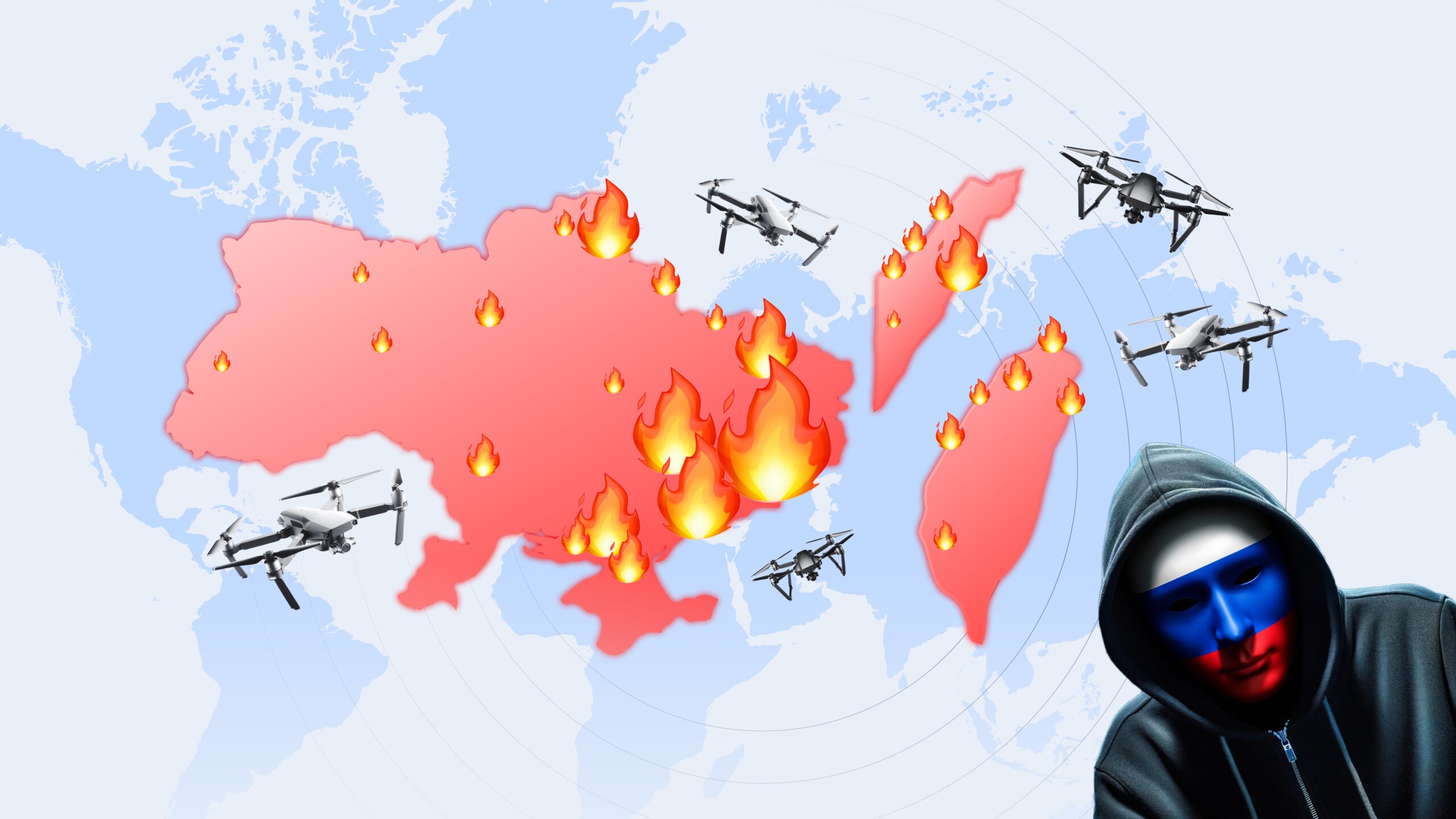
1. Conscription and workforce management
One of the biggest concerns is conscription, as many Ukrainian men are subject to mandatory military service. However, IT professionals are often classified as critical workers, and many companies can obtain deferrals for their staff. This means that a large portion of the tech workforce can continue working, though the situation requires careful legal and human resource management. For companies, it’s about maintaining flexible staffing models and working closely with the government to ensure minimal disruptions to project timelines. In addition, outstaffing vendors diversify their workforce by hiring more women and expanding recruitment to regions in Ukraine that are less affected by military actions.
2. Power supply and infrastructure challenges
Power outages and infrastructure damage are common in conflict zones, but Ukrainian companies have invested heavily in backup solutions. Many offices and homes are now equipped with generators, backup batteries, and satellite internet to ensure continuous operations. These setups allow teams to maintain uninterrupted service during blackouts or utility shortages. Additionally, cloud-based tools and remote-first infrastructure have been crucial, allowing developers to keep working regardless of their location within the country. Ukraine’s tech sector had already adopted remote working long before the war, so this transition has been smoother than expected.
3. Distributed teams and international presence
To further mitigate risks, many Ukrainian IT firms have adopted a distributed workforce model, opening offices or hiring remotely in other countries like Poland, Romania, or even farther afield. This way, they can ensure business continuity even in the most volatile situations. By having key staff spread across various regions, they maintain project oversight and delivery, even if certain parts of the country are affected by escalations in conflict.
4. Mental health and employee support
The psychological toll of working in a war zone cannot be underestimated. Outstaffing company Ukraine has prioritized employee well-being by offering mental health support and flexible working hours. This helps teams remain focused and productive under extremely stressful conditions. Many companies have introduced regular check-ins, wellness programs, and community support to help employees manage the emotional strain.
5. Client communication and trust-building
In such unpredictable circumstances, transparent communication with clients is key. Outstaffing Ukraine companies have built trust by keeping clients informed about their risk management strategies, ensuring they know that contingency plans are in place. Whether it’s through regular updates or demonstrating their ability to meet deadlines despite the challenges, they continue to prove that they can deliver high-quality software services even in times of crisis.
***
Ukrainian outstaffing companies have shown remarkable agility in dealing with the realities of war—whether it’s through managing conscription, ensuring power supply, or adopting remote and distributed workforces. Their ability to remain reliable partners in the global IT industry stems from a combination of preparedness, innovation, and an unwavering commitment to their clients. This resilience not only strengthens the companies themselves but also reinforces Ukraine’s reputation as a hub for world-class tech talent, even in the face of adversity.
How to choose the best IT outstaffing service in Ukraine?
When choosing your outstaffing services in Ukraine, consider your vendors’ expertise, reliability, communication, and ability to scale. Here’s a guide on what factors to evaluate and examples of some reputable companies.
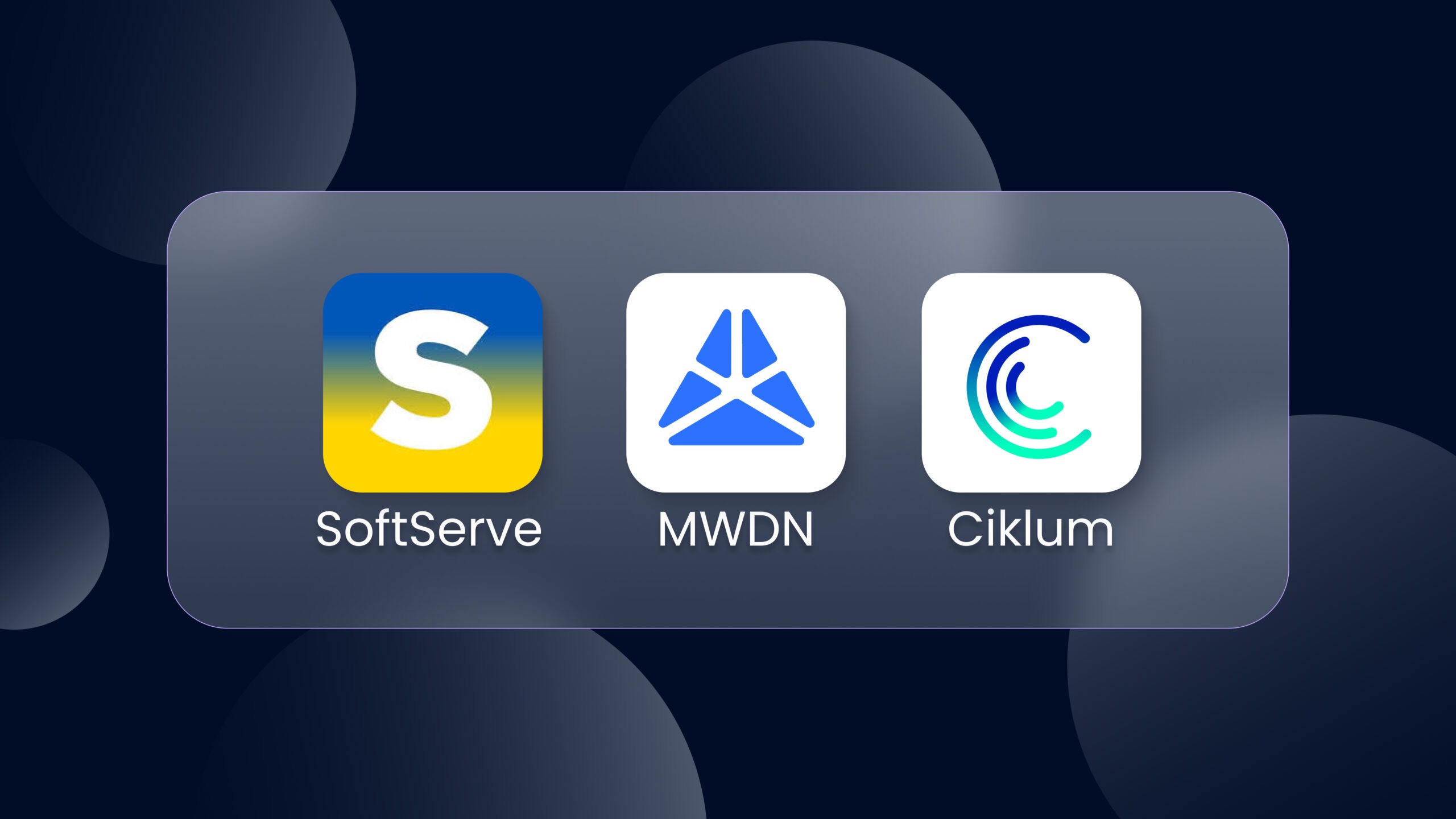
1. Technical expertise and industry focus
Your first priority should be ensuring the company has deep expertise in the technologies and domains you require. Whether it’s web development, AI, or blockchain, Ukrainian developers are known for their specialized skills. Check the company’s portfolio and case studies to verify their experience with similar projects.
One of the great examples is SoftServe. As one of the largest IT vendors in Eastern Europe, SoftServe offers a broad range of technical expertise, from cloud computing to AI and enterprise-level solutions. Their vast experience across industries makes them a solid choice for large-scale projects with a budget to spend.
Reliability and risk management
Given the current geopolitical situation, it’s important to choose a company that has clear risk management strategies, including distributed teams and reliable infrastructure. Ensure they have a proven track record of delivering projects on time and maintaining productivity, even during difficult situations.
A great example of a medium-sized vendor is MWDN. The company specializes in IT outstaffing and has built a reputation for reliability despite the challenges posed by the ongoing conflict in Ukraine. We hire highly skilled developers in Ukraine and other countries while maintaining flexibility and close communication with clients. Our agile approach makes us perfect for startups and businesses seeking specialized teams without needing to engage with a larger, more expensive vendor.
Communication and cultural fit
Effective communication is essential when managing remote teams. Check for a company’s language proficiency, especially in English, and ensure their work culture aligns with yours. Many Ukrainian outstaffing companies have strong communication processes in place to keep clients informed and projects on track.
Scalability and flexibility
One of the key advantages of outstaffing is the ability to scale your team quickly. Choose a company that can easily ramp up the number of developers you need without compromising on quality or project timelines.
Another large player in Ukraine, Ciklum, is known for providing scalable solutions across multiple industries, from finance to healthcare. They have the resources to support rapid team expansion while maintaining high technical standards.
Client reviews and recommendations
Look for companies with positive client testimonials and strong industry reputations. Reliable outstaffing companies often have long-standing partnerships with clients and a transparent approach to feedback.


